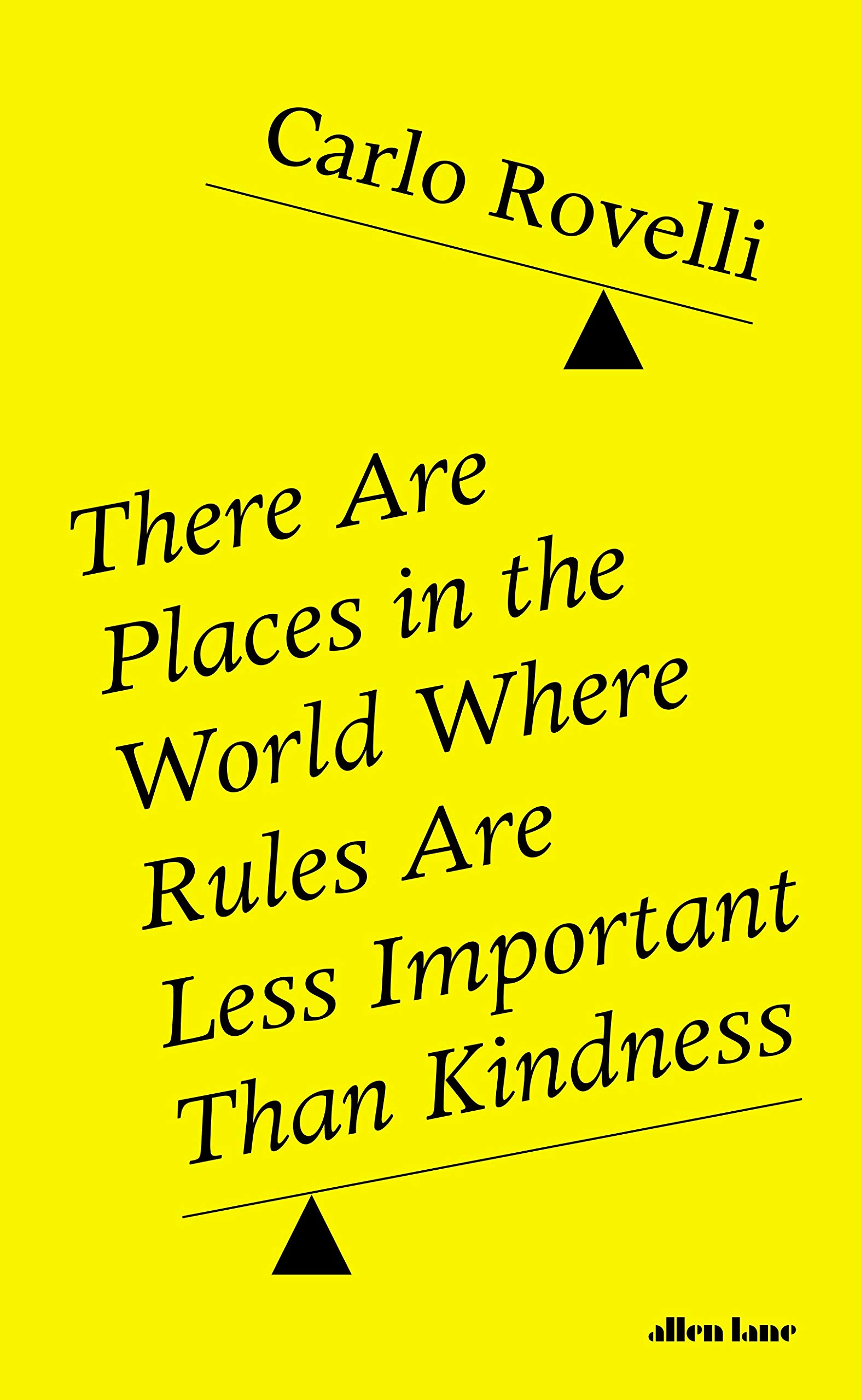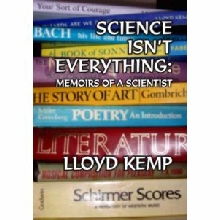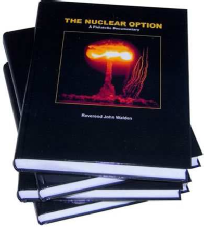BOOK REVIEWS |
Book review of ‘Paul Langevin My Father The Man and His Work’
By Andre Langevin
Translated and adapted by Francis Duck. EDP Sciences 2022 France
244 pages ISBN 9782759827824
Reviewed by Dr Arpan K Banerjee Chair ISHRAD (Int Soc Hist Radiology ) and trustee and former Chair BSHR ( Brit Soc Hist Radiology)
Paul Langevin was a brilliant physicist and in addition an important humanitarian who’s antifascist stance and left wing leanings led him to be an important champion of human rights and justice long before it became fashionable. Langevin was born in Paris and studied physics and chemistry both in Paris and in Cambridge University, UK where he studied physics under JJ Thompson. He was Pierre Curie’s doctoral student and wrote a brilliant thesis on the ionisation of gases.
It is claimed he had an affair for several years with the widowed Marie Curie who was of course married to Pierre before his tragic accident.
He became a professor of physics at the College de France in 1904 at the early age of 32. In 1905 he wrote a paper on relativity and was later to become a great champion of Einstein’s contributions in this field and nominated him for a Nobel Prize. He was elected to the Academy of Sciences in 1934.
He is best remembered today for his work on paramagnetism and diamagnetism and also more importantly for his work on ultrasound. He pioneered the use of acoustics and piezoelectricity and used sound echoes to detect positions of submarines underwater during the First World War. Thus he is considered a early pioneer in ultrasound use a technique which was of course to go on to become an important method of medical imaging from the latter part of the 20th century. He died after the end of the Second World War in 1946 and is buried with the great and good of France in the Pantheon in Paris.
This remarkable scientist’s life story deserves to be better known. His son Andre Langevin wrote this biography of his father in French over 50 years ago in 1971.
Francis Duck a distinguished medical physicist with a lifelong interest in ultrasound and the history of physics has set about translating this biography into English to enable a wider readership to be acquainted with the achievements and remarkable life of this French scientist. The translation is a labour of love and reads well and will hopefully help acquaint a new generation of readers with the achievements of this remarkable French individual. It is a fascinating read with snippets of information about many of the important scientists and personalities of that era. Langevin fought against war and Fascism and played an important part in the resistance movement in France during WW2.
The list of Langevin’s publications is useful for those who might want to access his original papers. Langevin was highly respected by his scientific colleagues worldwide and was nominated fifteen times for a Nobel Prize which he sadly was never awarded.
My only minor criticism of the book is the slightly poor print quality but we should not let this detract us from picking up this book and enjoying the biography of a remarkable human being who deserves to be better remembered today for his scientific brilliance and courageous stance he took against Fascism and other forms of social injustice.
‘The amazing story of Lise Meitner by Andrew Norman
Pen and Sword Books UK 2021
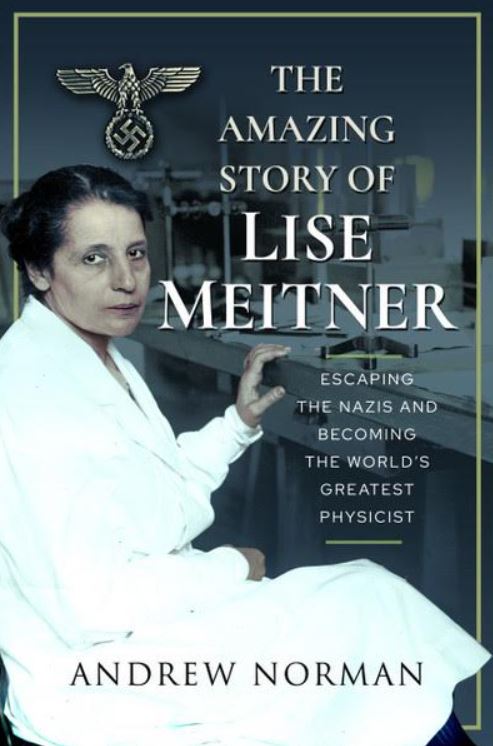
Reviewed by
Dr Arpan K Banerjee
Chair Int Soc Hist Radiology (ISHRAD),
Former Chair Brit Soc Hist Radiology
The name Lise Meitner is not as familiar with the public today as it deserves to be. Albert Einstein considered her to be the German ‘Marie Curie’ and she was one of the brightest female physicists of her era.
This new biography by Andrew Norman tells the tale of this remarkable woman and her eventful life and contributions to physics in an accessible manner for readers of all backgrounds to appreciate.
She was born in Vienna, Austria in 1878 and showed an early passion for science. Meitner studied maths and physics in Vienna University and in 1905 was awarded her physics doctorate being the first female from Vienna to achieve this ( She was only the second woman in the world to obtain a doctorate at a time when the field of science was dominated by men.)
She became interested in radioactivity and initially studied alpha particles.
Meitner moved to Berlin, became friends with Max Planck ( of quantum theory fame ) and collaborated with the chemist Otto Hahn. She continued her work on radiochemistry and isotopes and beta decay and radioactive processes at the Kaiser Wilhelm Institute, Berlin for 30 years from 1907 and her fruitful collaborations with Hahn and others produced over fifty papers. She discovered the isotope protactinium and worked on the neutron bombardment of uranium. Sadly due to the Nazi persecution of Jews in Germany she emigrated in 1938 to Stockholm, Sweden.
In 1939 she published her mathematical work on nuclear fission in the journal Nature with her nephew Otto Frisch ( later to prove important in the development of the atom bomb) but in 1944 it was Hahn who received the Nobel Prize in Chemistry for this with her contribution not acknowledged by the Nobel committee. Interestingly she was nominated for the Nobel Prize in Chemistry and Physics on numerous occasions from 1939 onwards but was unsuccessful in obtaining one.
In later life this injustice was partly rectified by being awarded the Fermi Prize in 1966 and she went on to receive numerous honorary degrees and other awards including the Max Planck medal , Otto Hahn prize, membership of the Swedish Academy of Sciences and foreign membership of the Royal Society, London. She was an excellent ambassador for women in science and continued to encourage women to enter these fields well into her 80’s. She spent her final retirement years in Cambridge, UK passing away in 1968. The element meitnerium was named after her in her honour.
This superb biography of an outstanding scientist is well written with black and white illustrations and an index and serves to remind us all of her remarkable life lived with honesty, integrity and dignity as well as her numerous scientific achievements. The characters portrayed in the book and her collaborators and scientific contemporaries are a who’s who of important scientists of the first half of the twentieth century and reading this book was an informative, humbling and inspiring experience.
Gaston Contremoulins 1869-1950 Visionary Pioneer of Radiology by Patrick Mornet
EDP sciences, France 2019 p188
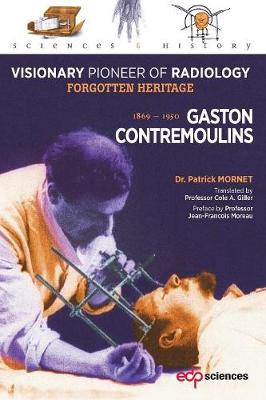
Reviewed by Dr Arpan K Banerjee Chair Int Soc Hist Radiology (ISHRAD) , Past Chair and current trustee Brit Soc Hist Radiology (BSHR)
The name Gaston Contremoulins is probably unfamiliar to most radiologists even in his native country of France.
In this brilliant biography by Dr Patrick Mornet ( translated from French to English by Prof Giller) readers are reminded of all the major contributions made by this remarkable self-taught genius who was not a qualified doctor, and despite the prejudice and opposition that he faced throughout his career went on to make major scientific contributions to his chosen field of radiography.
Contremoulins started off trying to pursue a career in art but soon realised that his talents would not enable him to make a mark in this field. He then began to develop an interest in photography and obtained employment in the microphotography laboratory in Paris working with the professors of pathology and histology and anatomy. He came to the attention of Professor Marey and joined the physiological laboratory of the Institute of France. He became proficient in physics, mathematics, geometry as well as anatomy and physiology and photography and this placed him in good stead when Rontgen made his discovery of x-rays in 1895. Contremoulins became fascinated by X-rays and very quickly decided to make this his life’s work. His skills enabled him to develop techniques for improving radiographic examinations of patients.
He is particularly famous today for his early experiments in using radiographic techniques for identifying foreign bodies especially in the skull. As such he is rightly considered the inventor of the principles of stereotaxis a technique which today remains important in neurosurgery. He adapted photographic techniques using geometric reconstructions from drawings he had made and created the operating compass which enabled accurate three-dimensional identification of foreign bodies a technique he described as metroradiography. He was made head of the radiology laboratories and developed the service at the famous Necker hospital in Paris from 1898 till 1934. He was fortunate as the hospital had electricity which was not present in the department of Professor Beclere who is today considered the father of radiology in France. The other person who had the facility of electricity in their department in Paris was Albert Londe at the Salpetriere Hospital .
Contremoulins developed stereoscopy which was a 3D visualisation technique which helped define the depth of metallic foreign bodies within human tissues. He also assisted Professor Sicard in performing the first myelogram with lipiodol. He made contributions to the field of orthopaedic radiography. In the early days only one image was used for identification of fractures. His radiosurgical techniques helped orthopaedic surgeons identify femoral neck fractures more accurately and resulted in better outcomes for these patients. He invented the techniques of pelvimetry for obstetricians. He even made advances in the field of radiological protection and safety, a subject which he took seriously and very few of his personnel suffered from radiation injuries which were common in the early part of the 20th century.
The book covers the difficulties that Contremoulins faced throughout his career. As he was not a medical man radiologists who were medically qualified were in opposition to his being given influence and prominence. In the early days there were considerable conflicts between practitioners who were medically qualified and those who were not. Contremoulins believe it was important to be trained and competent at what he was doing and this had nothing to do with having a medical degree. He argued that his mechanical skills and knowledge of engineering principles and mathematics enabled him to provide a high-quality service taking radiographs. He believed in teamwork long before it became fashionable. Interestingly the surgeons liked working with him as he helped improve the outcomes for their patients. The book gives us an insight into radiological practice in the early part of the 20th century in Paris and introduces us to many of the important medical men of that era. It contains numerous photographs and is well referenced with an extensive bibliography for those who might wish to read the original papers.
Biographies of radiological/radiographic interest are few and far between. This volume is a superb contribution to the field of radiological history and does justice to the contributions of a remarkable man who has all but been forgotten even in his native land.
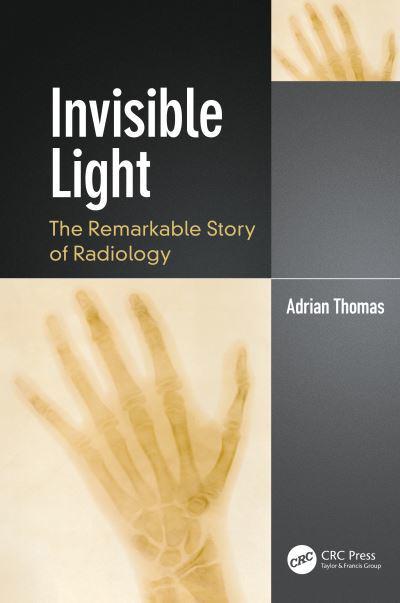
‘ Invisible Light - The Remarkable Story of Radiology’ by Adrian Thomas
Taylor and Francis 2022
Reviewed by Dr Arpan K Banerjee
Chair International Society for the History of Radiology (ISHRAD)
The title of Adrian Thomas’s latest book is essentially a play on the title of Sylvanus Thompson the Victorian scientist’s book from 1897 ‘Light visible and invisible’. Radiology historians will also be aware that ‘The Invisible Light’ is the title of the British Society for the History of Radiology’s in house journal which has been edited by Thomas for many years.
The book is very much a personal account of the history of radiology and gives the author a chance to expand on his previous contributions in this field with extracts and references from previous books and contributions published previously in The Invisible Light and other places.
The opening chapter covers the discovery of X-rays by Rontgen which leads on nicely to the next chapter on early radiology departments and the problems they faced. The chapter on radiology anatomy serves to remind us all about the importance of understanding the large variations in normal appearances in radiology practice which is a prerequisite for being able to identify pathology accurately.
A chapter covers dangers which were inherent in early X-Ray departments including electrical and radiation injuries. The history of the early X Ray tubes and early plates and screens is of particular interest covering the progress from Crookes and Coolidge tubes through to modern PACS. The book also covers the development of contrast media and there are chapters on CT tomography and MRI.
The final chapter concludes with thoughts on the future of imaging. The text is accompanied by black and white illustrations and useful references for further reading and there is a helpful index. The book is a welcome addition to the literature in this field.

Book review of ‘Imagining imaging’ by Michael R. Jackson CRC Press,
Taylor and Francis Group, UK 2022 p260, ISBN 9780367427825
Reviewed by Dr Arpan K Banerjee Chair Int Soc Hist Radiology (ISHRAD) .
Dr Michael Jackson the author of this interesting new book is a radiologist with an interest in art both classical and modern.In this new book he has set about exploring the relationships and unusual interfaces between modern diagnostic imaging and artworks from various eras. The exploration covers not just paintings but also the modern media such as cinema which today borrows from ideas emanating from modern imaging technology. A chapter on visual neurophysiology serves to remind us of the complexities of the perceptual process on which image appreciation and analysis all ultimately depend.
The breadth of western art has been fertile material for analysis. We are taken on a journey from historical cave paintings, Egyptian art, through to the development of perspective in art with examples from Durer in Germany through to the Renaissance painters well versed in anatomy who depicted the human body in astonishing detail in their painted dissected studies of the body which today can be reproduce from modern CT scanning technology. Examples of the anatomical drawings from Vesalius and other ecorche examples of religious iconography demonstrated the interfaces of anatomy and art with modern imaging.
Picasso interestingly dabbled with bizarre perspectives in his artistic portrayals of the body and provided much material for analysis. Modern artists have explored art and radiology with many being inspired from radiological studies and images especially MRI and CT angiographic studies of the brain. Others such as Hugh Turvey have used radiography as a tool to create artistic images.
An analysis of the interface of radiology and cinema is illustrated with the film ‘The Man of Steel’ about Superman who has X-ray powers but other films such as the Avengers franchise and Transformer films have also tapped radiology resources to provide entertainment.
Dr Jackson has used a vast range of illustrated source material from art, cartography, religious iconography, medical history, television, cinema and journalism and personal anecdotes to synthesise a smorgasbord of diverse subject areas into a very enjoyable and readable account of his thesis that the foundations of our modern image interpretation were laid by the works of artists, painters and scientists of yesteryear. All connected with medical imaging will find something of interest in this volume
|
There are Places in the World Where Rules Are Less Important Than Kindness by Carlo Rovelli, Allen Lane 2020 p 230 £20 ISBN 9780 241454688 Reviewed by Dr Arpan K Banerjee Former Chair and current Trustee Brit Soc Hist of Radiology Carlo Rovelli is an Italian physicist best known for his books ‘Some brief lessons in Physics’ and ‘The Order of Time’ both worldwide best sellers. In the 1960’s to the 1980’s Richard Feynman was considered the great populisers of physics, an accolade passed on to Stephen Hawking at the end of the twentieth century and now the baton is being bestowed on Carlo Rovelli. Rovelli is an Italian theoretical physicist who has made significant contributions to the study of space and time. He is probably best known to the public however for his books popularising physics.This new collection of his translated pieces ( translated by Erica Segra and Simon Carnell) are a delightful smorgasbord of his varied interests and are a collection of short essays previously published in a variety of Italian newspapers and periodicals. The title I think is a great one and should be applicable to the NHS! Essay topics range from Aristotle, Copernicus and Newton through to Black Holes, global warming and scientific philosophy and even the author Nabokov’s interest in butterflies. Einstein’s many errors are the subject of an interesting piece ( if the great man made so many errors what chance do we mere mortals have?! ) Darwin gets a mention and readers will find the essay on the double Nobel Laureate Marie Curie of interest. The essay on the brilliant British mathematician Roger Penrose written in 2011 is now of topical interest– he was awarded the Physics Nobel Prize in October 2020. Finally an essay on the current Covid pandemic written in April concludes this collection. A truly eclectic and thought provoking collection. Rovelli in this collection of essays provides us with a glimpse of his wide interests in science, history and philosophy. The essays are short and pithy , well written and the translation has done him justice. Most people outside Italy will probably have not read them before and the collection produced here which can be dipped in and out of and provide both entertainment and education will no doubt also go on to be a bestseller like his previous books. |
|
|
Taming the Rays - by Geoff Meggitt pp 422 Pitchpole Books 2018 ISBN978-
Reviewed by Dr Arpan K Banerjee Past Chair Brit Soc Hist Radiology This is the second edition of a book first published to great acclaim a decade ago. The early pioneers did not understand the harmful effect of x- The book starts with the coverage of the early years of X- The chapter on fission and weapons is a truly international coverage of this subject and makes both interesting but chilling reading especially when covering the recent Chernobyl disaster. The concepts of dose and genetic and somatic effects are covered in detail. There are also useful chapters on radiation measurement and safety as well as a chapter on the development of organisations which specifically set about dealing with the issues of radiation protection and safety including coverage of the X- This is a comprehensive well researched monograph which is international in its coverage and referenced comprehensively a feature which will help those interested in the primary resources and looking up further information . Many will dip in and out and are bound to find interesting information in this informative and scholarly contribution to this very important field of study.
|
|
|
Genes, Flies , Bombs and a Better Life - By Geoff Meggitt Pitchpole Books 2016 300pages Reviewed by Dr Arpan K Banerjee Past Chair Brit Soc History of Radiology Hermann Muller was born in the USA on Dec 21 1890 of German heritage (his grandfather had emigrated from Germany in the mid 1850’s ).He studied at Columbia and then taught physiology at Cornell Medical College. His great passion however was genetics and he wanted to do research on Drosophila a field of study initially pioneered by the eminent scientist Thomas Morgan who was awarded the Nobel Prize in 1933 in medicine for his work on chromosomes and heredity. Julian Huxley the eminent biologist found Muller a job at the Rice institute , Houston where he started his pioneering work on mutations. From 1925 onwards he was Professor at Texas teaching genetics. In 1926 he discovered that radiation (xrays) caused gene mutations. This was to result in the Nobel Prize in Medicine in 1946. Muller was showered with numerous honours. Muller’s socialist and communist leanings are well covered in this book. His years of exile in Russia 1934- In 1945 he became a Professor of Zoology at Indiana, USA. He published many books including ‘The Mechanism of Mendelian Heredity’ with Morgan in addition to over 300 original papers. Meggitt’s biography of this fascinating maverick, scientific genius is a thoroughly researched account of a remarkable life and does not shirk from discussing the controversial aspects of his subject’s character and beliefs including the subject’s communist convictions and belief in eugenics. In the early days of X-
|
|
|
Bones : Orthopaedic Pathologies in Roman Imperial Age A Piccioli et al Publisher: Springer 2015,154pp. Reviewed by Dr Arpan K Banerjee, Chairman British Society for the History of Radiology. This new book from Italy is an interesting publication from the distinguished publishing house Springer which presents the results of analysis of over 1800 cases of bone pathology recovered from a recent archaeological excavation outside Rome. It is a truly multidisciplinary work involving orthopaedic specialists, radiologists, palaeopathologists, anthropologists and medical historians who have used scientific analysis including radiography and CT scanning to uncover information about the bones of Roman bodies from the first and second centuries AD unearthed from an excavation site from a Rome suburb. The scientific survey has unearthed fascinating, detailed information about ancient human osteology. Examples of infection including osteomyelitis, degenerative changes such as osteoarthritis and gout as well as of course trauma are all identified in specimens from 2000 years ago. There are chapters on the study of ancient bone remains, estimation of age of death, dentoalveolar disease, as well as information on orthopaedics in ancient Rome. The clinical case studies include examples of a wide range of fractures, degenerative diseases and even bone tumours, and metabolic and infective conditions. The book reminded me of the recent exhibition in the British Museum in 2014 on the ancient Egyptian Mummies in the British Museum collection which had been studied with CT scanning to reveal a wide range of diseases including tooth abscesses and peripheral vascular diseases to name a few. The studies from the Italian group shed light on medicine in early Rome and the scholarly well researched and illustrated volume is an important contribution to palaeopathological studies and will be of interest to a wide audience including medical historians. All the contributors should be congratulated in producing this fine work of scholarship |
|
|
Adrian Thomas and Arpan Banerjee In 1890, Professor Arthur Willis Goodspeed, a professor of physics at Pennsylvania USA was working with an English born photographer, William N Jennings, when they accidentally produced a Rontgen Ray picture. Unfortunately, the significance of their findings were overlooked, and the formal discovery of X- The discovery has since transformed the practice of medicine, and over the course of the past 130 years, the development of new radiological techniques has continued to grow. The impact has been seen in virtually every hospital in the world, from the routine use of Ultrasound for pregnancy scans, through to the diagnosis of complex medical issues such as brain tumours. More subtly, X- Written by two radiologists who have a passion for the history of their field, The History of Radiology is a beautifully illustrated review of the remarkable developments within radiology and the scientists and pioneers who were involved. This engaging and authoritative history will appeal to a wide audience including medical students studying for the Diploma in the History of Medicine of the Society of Apothecaries (DHMSA), doctors, medical physicists, medical historians and radiographers. |
|
|
Physicists and Physicians –A History of Medical Physics from the Renaissance to Röntgen Francis Duck In this book, Professor Francis Duck has written a fascinating story of the origins of medical physics. It starts in Renaissance Italy and ends with the discovery of x- The stories of biomechanics, medical electricity, physiological measurement, physiological optics and bioenergetics are all told. The French Revolution forged them into a single discipline. The subsequent impact on medical education is recounted. National characteristics are shown to have affected the spread of medical physics to Germany, England, Scotland and eventually the USA. The book includes 94 figures showing historical portraits, instruments and documents. It includes mini- IPEM 2013 |
|
|
Rolando F. Del Maestro Montreal: DW Medical Consulting Inc. 2006 $20.00. ISBN: 0771706359 This book started from an exhibition prepared by Dr. Del Maestro in collaboration with the Osler Library in Montreal to coincide with the 2006 Canadian Congress of Neurosciences and the book is the catalogue from the exhibition. The book is lavishly illustrated from the author's collection and is supplemented by material from the Osler Library. There are chapters on anatomy, neuro-
|
|
|
European Society for Radiology The European Society for Radiology, in cooperation with ISHRAD and the Deutches Roentgen Museum have published two excellent free books entitled The Story of Radiology to celebrate the International Day of Radiology. Click here for Volume 1 and here for Volume 2.
|
|
|
Practical Mystic: Religion, Science, and A. S. Eddington M Stanley Hardcover; £24.70 Hardcover: 320 pages Publisher: Chicago University Press; illustrated edition (16 Oct 2007) Language English ISBN- ISBN- This is an interesting biography of Arthur Stanley Eddington the Cambridge astronomer. Science and religion have long been thought incompatible and this is emphasised in the recent book 'The Grand Design' by Stephen Hawking. Science and religion was an interest of Silvanus P Thompson the Quaker physicist and first president of what became the British Institute of Radiology. The apparent contradiction between science and religion was fully resolved than in the life and work of Arthur Stanley Eddington (1882- |
|
|
Science Isn't Everything: Memoirs of a Scientist Lloyd Kemp Softcover: 402 pagesPublisher: Aspect Designs (2009)Language EnglishISBN 978-
|
|
Team Twenty Ten: A Global Problem One Solution: A TeamGeorge KorankyePaperback: 290 pagesPublisher: McTaggart Publishing (15 Oct 2010)Language EnglishISBN-
|
|
|
Godfrey Hounsfield: intuitive genius of CT Stephen Bates, Liz Beckmann, Adrian Thomas and Richard Waltham Published by: The British Institute of Radiology (April 2012) 261 pages, dimensions 234 x 152mm [Paperback] ISBN 978- [Hardback] ISBN 978- [Website] www.GNHounsfield.org Review by Professor Wade Allison:The world needs exceptional people like Godfrey Hounsfield, Nobel Prize winner and inventor of CT but where do they come from? In this biography the authors have made a unique contribution toward answering this question. They have described how Hounsfield, a much liked man with modest education and indeed support, came to make his extraordinary personal breakthrough in medical physics with its universal benefit. Some biographies of genius have to plumb the dark corners of distorted or extraordinary backgrounds, but not here. What Hounsfield brought was exceptional intuition, dogged persistence and self belief. The book is well written in a relaxed style that quotes well- |
|
|
Radiation and Reason In "Radiation and Reason" Wade Allison explains, in simple terms and without using fancy maths, how radiation affects life. Wade is a Professor of Physics at the University of Oxford with 40 years experience of teaching these things. His account challenges the traditional view that nuclear radiation is very hard to understand and an extreme hazard. Modern scientific and medical evidence makes it obvious that this view is wrong - A little nuclear radiation is quite harmless and in a world of other dangers - Without justification great damage has been inflicted on public health and economic life in Japan as a result of the accident at Fukushima. Throughout the world the intention of many countries to abandon the use of nuclear power or load it with ever greater safety regulation and cost is unnecessary and even dangerous to the future of mankind. Evidently a complete change in world radiological safety is needed. |
|
|
Radium Girls: Women and Industrial Health Reform, 1910- The University of North Carolina Press (30 Jun 1997) ISBN- ISBN- The book is written by Claudia Clark, a historian from Central Michigan University. The books deal with the women workers who fell victim to radium poisoning in the early 20th century due to working with Radium paint. Many of the women worked at the Radium Dial Company in Ottawa, Illinois and they eventually suffered death from radium poisoning. The women were employed to paint the dials of watches with self- Claudia Clark writes that part of what made dial- The book is again recommended and resonates with the film Blond Venus. |
|
|
The Nuclear Option: A Philatelic Document Rev John Walden This beautifully produced book is written by the Reverend John Walden and deals with the discovery, development, tactical use, devastation and aftermath of the use of 'The Nuclear Option.' It has 560 pages, and is a full colour hardback of 23 chapters with 1,800 illustrations and weighs 2.1 kilos! There is an excellent accompanying CD which may be purchased. The book is beautifully illustrated and is recommended for all radiological philatelists. There are a very large number of stamps with a radiological or atomic theme. The Reverend John Walden MA, F.Inst SMM(Rt), APS is a British Combined Forces nuclear test veteran and he participated in the 1957 'Antler' series of nuclear tests in Maralinga, Australia. He is a retired Church of England Pastor and now lives in Norwich. He has been a philatelist for over 60 years, and is the current President of the Norfolk & Norwich Philatelic Society. You can order the book by writing to This email address is being protected from spambots. You need JavaScript enabled to view it. and if you mention my name he may give me a commission! The web address is: www.atomicstamps.eu |
|
|
Shocking Bodies: Life, Death and Electricity in Victorian England Iwan Rhys Morus Published by: The History Press Ltd Publication date: 01/Mar/2011 Format: Paperback - Product dimensions (mm): 234 x 156 For the Victorians, electricity was the science of spectacle and of wonder. It provided them with new ways of probing the nature of reality and understanding themselves. Luigi Galvani's discovery of 'animal electricity' at the end of the eighteenth century opened up a whole new world of possibilities, in which electricity could cure sickness, restore sexual potency and even raise the dead. In "Shocking Bodies", Iwan Rhys Morus explores how the Victorians thought about electricity, and how they tried to use its intimate and corporeal force to answer fundamental questions about life and death. Some even believed that electricity was life, which brought into question the existence of the soul, and of God, and provided arguments in favour of political radicalism. This is the story of how electricity emerged as a powerful new tool for making sense of our bodies and the world around us. ISBN- |
|
|
The Transparent Body: A Cultural Analysis of Medical Imaging (In Vivo: the Cultural Mediations of Biomedical Science) Jose van Dijck (Paperback - Publisher: University of Washington Press (April 2005) Language English ISBN- ISBN- This book is interesting and looks mainly at the cultural implications of medical imaging. I find the interface between medical imaging and popular culture very fruitful. From the Amazon review: "From the potent properties of X rays evoked in Thomas Mann's "Magic Mountain" to the miniaturized surgical team of the classic science fiction film "Fantastic Voyage", the possibility of peering into the inner reaches of the body has engaged the twentieth- "The Transparent Body" considers the dissemination of medical images into popular culture. The interior of the body has become a pervasive and common cultural presence. Jose van Dijck explores the interactions between medical images and our cultural ideologies and again this book is recommended. |
|
|
An Interventional Radiology Odyssey: The Story of my Life and Work Springer 2016 pp103 Reviewed by Dr Arpan K Banerjee Chair Brit Soc Hist Radiology Autobiographies written by radiologists are few and far between. Few radiologists have chronicled their own life stories. It is therefore a great pleasure to find this new radiology autobiography written by a true giant of interventional radiology. Josef Rosch who was born in 1925 in Czechoslovakia has chronicled his amazing life story in this slim volume. It is a delight to read and is likely to inspire the next generation of interventional radiologists. Rosch was inspired to do radiology by his inspirational radiology teaching during medical student days having initially intended to be a physician. Between 1954 and 1967 he carried out research on angiography in Prague. In 1967 he moved to Oregon on a research fellowship to work with Charles Dotter, the angiography pioneer. The pioneering work on gastrointestinal bleed embolization, thrombolysis, pharmacoangiograhy and TIPS( transjugular intrahepatic portosystemic shunt) and expandable metallic stents carried out there is described. Rosch chronicles his friendship with Judkins, Dotter and Bill Cook (owner and President of Cook Medical) amongst many other friendships. He mentored generations of future leaders in their fields. The founding of the Dotter Interventional Institute in 1990 is described along with his subsequent new fellows and research which continued well into his retirement years. Rosch has had a brilliant career in this new field and can lay claim to be one of the true pioneers of this subject. His phenomenal industry , prolific research output and work ethic come through in this slim volume. All who read it will be inspired by his remarkable story and his outstanding contribution to the new field of medicine. |
|
|
Louis Harold Gray: a founding father of radiobiology by S Wynchank. Springer 2017 pages 137 Reviewed by Dr Arpan K Banerjee Past Chairman British Society for the History of Radiology. This slim volume is a publication from the Springer Biography series. The last contribution in the series I read was the superb autobiography of Rosch the interventional radiology pioneer. This biography is of Louis Harold Gray the British physicist and a giant in the field of radiobiology which is the basis of modern radiotherapy. Hal Gray as he was known was born in London in 1905 an only child educated at Christ’s Hospital and subsequently the physics department at Cambridge University where he was taught by Rutherford. He was a brilliant student and continued to do a PHD at the Cavendish labs under the supervision of Chadwick discoverer of the neutron and a Nobel Laureate. Gray was interested in nuclear physics and was interested in how ionising radiation could treat tumours. He moved to Mount Vernon Hospital to pursue his interests as hospital physicist. He used a neutron generator to measure ionising effects on tissues. After the War he moved to the MRC Radiotherapy research unit at the Hammersmith Hospital where his team did much pioneering work. In 1949 he became President of the British Institute of Radiology. Sadly, after differences with his boss at he MRC unit he had to leave the Hammersmith Hospital in 1953 and returned to Mount Vernon where he built a superb world famous radiobiology unit. He did much travelling in the late 1950’s when he was at the height of his fame. Gray was elected Fellow of the Royal Society. Gray’s stroke is described and he sadly passed away in 1965 aged only 59. In 1975 he was honoured by having the absorbed dose of radiation named after him. This well researched biography is a delight to read and tells the story of a remarkable scientist whose contributions laid the foundation stones for future radiotherapy. |

